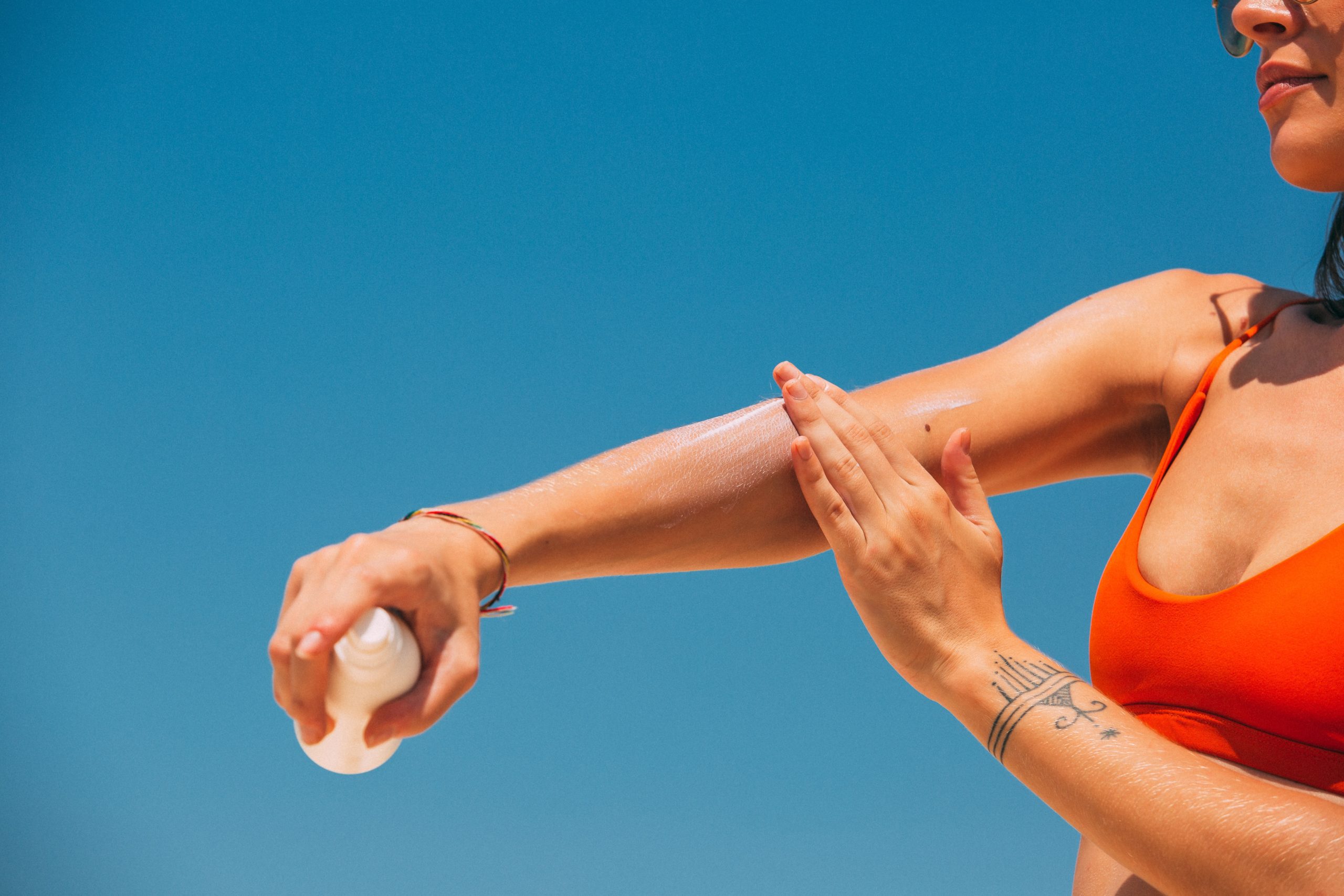REDUCING THE RISK
With skin cancer, prevention is key.
There is no guaranteed way to fully prevent skin cancer, but these skin cancer prevention tips will lower your risk of developing problems. Take sun-safety measures when stepping out of your home. These tips on how to prevent skin cancer are a great place to start.

Follow the golden rule.
If you are going out in the sun, this catchphrase will remind you of the necessary steps you should take to safeguard yourself from UV rays:
Slip on a shirt – wear clothing that covers your legs and arms
Slop on sunscreen – Make sure your sunscreen has a sun protection factor (SPF) of 30 or higher, and offers broad spectrum (both UVA and UVB) protection.
Slap on a hat – Wear wide-brimmed hats to shade your head, ears, face, and neck.
Wrap on sunglasses – Check that your sunglasses block UVA and UVB rays.
Slip, Slop, Slap, Wrap. This golden rule will keep you and your family safe in the sun.
How to avoid UV rays.
- Avoid tanning salons
Their rays can be just as powerful as the sun. Regular use of tanning beds is known to be associated with enhanced risk of skin cancer, particularly if a person starts using them before the age of 30 years. - Protect kids from the sun
Children require special attention as they often spend more time outdoors than adults. As children become more independent, they should be taught about the risks of excess sun exposure. - Protect your head
Your scalp and face are the sun’s easiest targets. Protect them by wearing a wide-brimmed hat. - Wear UV-blocking sunglasses
Ocular melanoma is the leading cancer of the eye. Avoid it by minimizing your eye contact with the sun. - Wear UV protective clothing
Believe it or not, your regular shirt won’t block out many UV rays. UV repellent clothing offers a UPF 50+ protection. This UPF factor determines the efficiency of your sun protective clothing. The higher the rating, the better. - Cover your hands
Our extremities often get left out, when in fact they receive more exposure than most parts of our bodies, year round. Wear gloves or sunscreen. - Avoid long-term exposure
Long-term exposure can result in sunburns. Not only do sunburns affect appearances (aging, wrinkling, sun spots), they alter the skin’s molecular structure. They’re actually a major precursor to skin cancer. - Wear breathable clothing
Wearing clothing that breathes will minimize your chances of wanting to shed your clothes on warm days. Stay cool with breathable, UV repellent clothing. - Seek shade
Don’t rely on clothing alone. Shade can be a great way to block out UV rays. - Don’t skip your routine on overcast days
UV rays can still reach your skin when the sun isn’t shining. Cover yourself up, rain or shine. - Share your knowledge
The more you know about sun protection, the more you can educate others. - Maintain a strong immune system
A weakened immune system increases your risk of infections and other diseases, including skin cancer.
Skin cancer screenings help detect abnormalities early on.
Regularly checking your skin can help you notice any abnormal or new moles, or other unusual skin growths. Certain types of moles have a higher likelihood of converting into skin cancer. Your physician may choose to observe and monitor these moles closely, or even remove them.
Note: Proactively removing moles doesn’t guarantee protection from skin cancer because not all types of skin cancer develop from existing moles.
